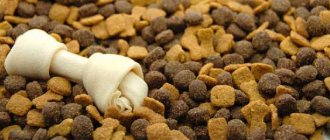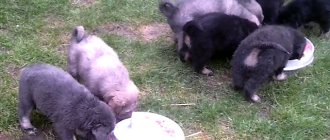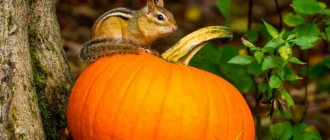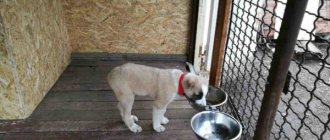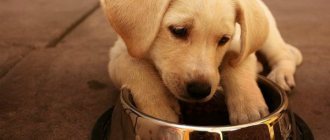The chipmunk is a small striped animal from the squirrel family. Rodent lovers sometimes keep them as pets. The lifespan of an animal depends on the conditions of its keeping and the quality of food.
In the wild, the chipmunk eats only plant foods, so an unbalanced diet often causes serious illnesses in animals that live in captivity.
Let's find out what to feed a rodent at home.
Origin of the species and description
Photo: Chipmunk
The Asian chipmunk differs from most inhabitants of the American continent in the less clear pattern of stripes on the head and a number of other morphological features of the structure of the skull. Known remains date back to the beginning of the Holocene. Transitional fossils such as Miospermophilus black were discovered in the Upper Miocene sediments of America, in the Irtysh basin.
This animal has close connections with squirrels and is a transitional form from those who live in trees to burrowers. Many North American squirrel species are closely related to chipmunks. In Europe, this is the genus Sciurotamias Miller, which was found in mountain forests in the Asian southeast and lived in western Europe in the Pliocene; the ancient anthropogen is also represented in eastern Europe (Ukraine).
Video: Chipmunk
Tertiary remains in Western Europe are found outside modern habitat areas. In the Pleistocene, remains are found within the modern range. There are two directions of development in the tribe, they are represented by Tamias chipmunks - mammals living in coniferous and coniferous-deciduous forests, and Sciurotamias - Chinese tree species that live in evergreen montane hard-leaved forests of the subtropics in Southeast Asia. They occupy the niche of squirrels there.
American individuals are represented by a wide variety, 16 species are known today. Almost 20 species of this rodent are grouped into two subgenera: North American inhabitants of deciduous forests and taiga animals of Eurasia. One species lives in the Russian Federation.
What not to give
Chipmunks are big gourmands and have a sweet tooth. But in order for your pet to be healthy and live a long and happy life, you cannot feed it prohibited foods.
It is forbidden:
- Almonds, they can cause food poisoning.
- Products containing salt, spices, sugar.
- I'm eating from the table.
- Citrus fruits, for example, orange, lemon, tangerine, lime.
- Chocolate, sweets, lollipops, etc.
- Carbonated drinks and other liquids other than water.
- Unwashed fruits and vegetables.
- Poisonous herbs and plants.
The diet of chipmunks is very diverse, and choosing ingredients is not difficult at all. All components of a complete diet are freely sold in pet stores. You should not feed your pet anything that can be harmful to health. It is better to prepare fresh grass, twigs, hay in advance, and purchase fruits and nuts at the market. Often babies die not from poor living conditions, but from improper feeding. With proper maintenance and feeding, chipmunks live at home for 5 to 8 years.
Appearance and features
Photo: Animal chipmunk
Chipmunks are easily recognized by their alternating white and dark stripes on their head and back. There are five dark stripes on the back, with a brighter central one. The light stripes have pale-yellow or reddish-ocher tones, and the belly is whitish. The tail is grayish on top. Short summer and winter fur does not change in color and has a weak spine.
From below, the hair on the tail is spread out on both sides in the middle. The front legs are shorter, they have long toes (3-4) of the same size. The hind legs have the fourth longest. The ears are small with sparse fluff. The Asian species, living in Russia, has a body length of 27 cm and a tail of 18 cm.
Main differences from the North American subspecies:
- the tail is longer;
- the ears are shorter and slightly rounded;
- the darker marginal dorsal stripes and the anterior parts of the first pair of lateral stripes are brighter;
- the dark border of the light stripe on the muzzle from the eye to the end of the nose is brighter;
- the dark stripe on the cheek is wider and often merges with the dark marginal stripes of the back.
The color of chipmunks becomes darker from north to south. In the southern regions of the range, reddish shades increase from west to east; the top of the head, dark cheeks, rump, and base of the tail are more brightly colored.
Interesting fact: In America, chipmunks love to feast on beech seeds and can place up to 32 beech seeds in their cheeks at a time, but they cannot climb the smooth trunk of this tree. When the harvest is small, the animals use the maple as a “ladder”; when they see a bunch of nuts, they pinch off and go down to pick it up.
Traps
Chipmunks are no larger than a rat. Therefore, you can use all the rodent traps you can buy to catch them. Most traps are humane. They simply lock the animal inside without harming it. To bait, scatter nuts (for example, peanuts) or sunflower seeds around the trap.
After catching the chipmunks, it is necessary to take them far enough from the site - 8-10 km - so that they definitely do not return. There is also an inhumane trap - a bucket of water. If you attach a plank to it, along which the chipmunk can reach the rim of the bucket, and place bait on it, then the chipmunk, falling into the bucket, will simply drown.
Where does the chipmunk live?
Photo: Siberian chipmunk
In Russia, the border of the range runs in the north of Siberia along the border of larch growth, in the northeast with the border of fir forests. In the north it rises to 68° N. w. spreads throughout the basin, reaching the mouth of the Yenisei and Indigirka.
In the west and south it expands to Vologda, Vetluga, descends along the left bank of the Volga, captures the right bank of the Kama, Belaya, skirting the Urals reaches Tara, Lake Chany, turning south, captures Altai, goes along the southern border of the country. Then it is found everywhere to the easternmost lands, including the islands, but is not found in Kamchatka. Outside Russia, it lives in Mongolia, China, Korea, and Japan.
The North American range includes most of the east from southern Canada to the Gulf of Mexico, excluding a few regions of the southeast. In the Adirondack Mountains it is found at altitudes up to 1220 m. There it prefers deciduous and mixed forests and is most common in mature (old-growth) deciduous species of maple and beech.
The animal loves forests with multiple growth, logging and windbreaks, and berry fields. In Asia, in the mountains, it rises to the very border of larch-cedar woodland and dwarf dwarf forest. In clean forests, chooses places with thick grass. In some places it inhabits forest-steppe areas, occupying areas with bushes and ravines. Burrows are made by rodents on hills, in dry places, and in rocky areas.
Interesting facts about the rodent:
- Chipmunks are bred in captivity; it is recommended to do this one at a time, so that there is no rivalry or fights between the animals. Chipmunks that grow up in captivity are easily tamed. Domestic chipmunks choose a varied diet, adding nuts and berries to their diet. The cage should be as large and spacious as possible; its bottom should be lined with a special substrate for rodents (wood bark, sawdust). To maintain physical fitness, the cage is equipped with a running wheel.
- In places where agricultural crops are located near forests, chipmunks are pests of fields. In some cases, these animals are capable of stealing the entire crop from the field.
- Chipmunks are represented in world cinema, for example, Chip and Dale, cartoon characters are chipmunks. The virtual musical group “Alvin and the Chipmunks” from the film of the same name was also loved by viewers.
What does a chipmunk eat?
Photo: Russian chipmunk
In the spring, rodents diligently examine the soil surface, looking for seeds left over from the fall. Since there are few of them at this time, shoots of bushes and trees, buds, and leaves are used as food until new fruits and seeds appear. During spring, summer, and autumn, the menu is supplemented with insects, earthworms, ants, and mollusks. Sometimes the animals eat passerine eggs and carrion; there have even been rare cases when they hunted small birds and mammals. They love to eat flowers and berries: lingonberries, cherries, raspberries, bird cherry, rowan, viburnum.
The main food of these animals is the seeds of coniferous and deciduous trees. They especially love pine nuts. The menu includes seeds of: ungulate, wild millet, climbing buckwheat, buttercup, knotweed, mouse pea, rosehip, umbelliferae, wild cereals, sedges and garden crops. They feed on sporangia of polytrichous mosses and mushrooms. Most of the diet consists of the fruits of maple, elm, linden, elm, euonymus, and Manchurian hazel.
At the end of summer, the rodent begins to replenish its pantries by collecting fruits and seeds of plants. He carries them more than a kilometer away. In total, the weight of such blanks can reach up to 3-4 kg. In Siberia and the Far Eastern lands, if pine nut harvests fail, animals make mass movements to fields of grain crops, peas, sunflowers or focus on berry fields: lingonberries, blueberries, blueberries, etc.
The list of main plants for animal food includes more than 48 species, of which:
- 5 – tree species (oak, larch, aspen, black and white birch);
- 5 – shrubby (lespidets - 2 species, rosehip, hazel, willow);
- 2 – subshrubs (lingonberries, blueberries);
- 24 – herbaceous (from cultivated crops - wheat, rye, peas, millet, barley, sunflower, corn, etc.).
Most of the diet of American animals consists of nuts, acorns, seeds, mushrooms, fruits, berries and corn. They also eat insects, bird eggs, snails and small mammals such as young mice. In pantries, the rodent stores reserves of seeds of various plants (98%), leaves, larch needles and terminal shoots. At one time, a rodent can bring more than eight grams in its cheek pouches.
Interesting fact: In the 30s of the last century, a pantry was found in the Primorsky Territory, where a chipmunk collected 1000 g of rye, 500 g of buckwheat, 500 g of corn, as well as sunflower seeds. Wheat grains of 1400 g and 980 g were found at the same time in two other burrows.
When eating food, the rodent holds fruits and seeds in its dexterous front paws. Using long incisors directed forward, it removes kernels from the shell or extracts seeds from the capsule. He then uses his tongue to push them back and slide them between his teeth and the stretchable skin of his cheeks. There they are kept while the animal is busy collecting food.
The capacity of the cheeks increases with age. When the cheek pouches are full, the animal takes the seeds to its nest or buries them in shallow holes that it digs in the ground, and then camouflages it with earth, leaves and other debris.
Repellers
You can scare away animals in various ways.
Cats and dogs
Cats and dogs can be the best defenders of territory. As a rule, rodents even avoid the smell of these animals, which mark the territory. Dachshunds, being burrowing animals, manage to hunt chipmunks, as well as mice and voles. What can we say about cats?
Sprays with capsicin
If there are no pets, you can use other repellers. For example, capsicin sprays. This substance makes peppers hot, its smell can scare away anyone. The spray is used to spray the fence, tree trunks, and the foundation of the house.
Rodent spray
In gardening stores today you can find rodent sprays with a wide variety of ingredients. It could be castor oil, the urine of predators, or a tar smell. It must be taken into account that all sprays wear off over time. It is necessary to repeat the treatment periodically. And be sure to do this after the rain.
Mothballs
The traditional method of rodent control is mothballs. They are placed both around the perimeter of the site and around the house, in the house itself and even in the attic. If there is a chipmunk hole on the site, then it is worth placing it near it. The smell of mothballs does not kill, but rather scares away animals. It forces you to leave even your favorite place.
Plants
You can scare away chipmunks with the help of flowers - daffodils. For some reason, rodents do not like both their smell and the taste of the bulbs. By planting these flowers among other bulbous plants, you can scare chipmunks away from the entire area with future flowers.
Important! Chipmunks also don’t like elderberries. The plant itself on the site can scare them away. Cut elderberry branches will also help, both on the site and in the house.
Features of character and lifestyle
Photo: Chipmunk
The animal spends most of its day collecting seeds, which are its most important source of food. Although most species most often forage on the ground, they all easily climb trees and shrubs to collect nuts and fruits. The animal is active during the daytime. With the onset of winter, the rodent hibernates even in the southern regions of Russia. On the American continent, animals do not hibernate throughout the winter, but do not emerge from their burrows; they sleep for several weeks, periodically waking up to eat; some individuals also behave in the southern part of their range in Mongolia.
In the European part of the Russian Federation, pairs inhabit one nest. In regions with permafrost, there is only one chamber in the burrow; in these cases, the pantry is located below the nest. The rodent makes tunnels for itself and builds chambers underground. He makes entrances to them in inconspicuous places among bushes or in stones, under rocks. Some species can make nests in hollows and spend a lot of time in trees.
Most burrows consist of one entrance, which leads to an inclined tunnel about 70 cm long. At its end there is a nesting chamber, with a diameter of 15 cm to 35 cm, covered with dry grass, down from seed heads, and crushed leaves. It hides plant seeds and nuts under a nest or in a separate chamber, providing itself with a supply of food for the cold season. There are tunnels up to four meters, with branches and side nests. There are no traces of feces in the animals’ homes; they make latrines in the side holes.
In the spring, as soon as it gets warmer and the snow begins to melt, the rodent wakes up. In summer, rodents make shelters in hollows, trunks of fallen trees and stumps. With the onset of cold weather, chipmunks disappear underground. At present, it is not known exactly what happens when the animals retire to their burrows for the winter. There is an opinion that they immediately go into a state of torpidity. In this state, body temperature, breathing rate and heart rate drop to very low levels, reducing the amount of energy needed to maintain life. From the first warm days of spring, animals begin to appear, sometimes breaking through the thickness of the snow.
Contents in the apartment. Eating at home
Chipmunks, if desired, can be kept at home. The main difficulty with this is what the chipmunk will eat. What a chipmunk eats in natural conditions depends on what food it managed to get at the moment. When keeping in houses, you need to independently think through the animal’s diet. Since natural instincts force chipmunks to constantly stock up for the winter, this animal will regularly beg its owners for food, even if it has recently eaten. If you feed the animal by hand, without scaring the animal, it will quickly become tame.
To maintain a house, a chipmunk requires a high metal cage, 1 m or more in height and length, and 50 cm in width. However, even with a large cage, the animal will need to walk around the room. The chipmunk should be “walked” around the apartment under the watchful eye, otherwise you may run out of pages in some book, and you may suddenly find reserves of nuts in a pile of bed linen. In general, chipmunks are quite clean and tidy. The apartment will be used for daytime living.
You can buy food for your chipmunk at a pet store or make your own. When kept indoors, the chipmunk is practically omnivorous. You can feed the animal with different types of nuts, except almonds, oatmeal, sunflower seeds, fruits, dandelions, berries, acorns.
When feeding fruits, remove the peels from them: they may contain chemical additives harmful to the animal. Chipmunks readily eat cottage cheese, cookies, and milk porridge. Since they have a need to grind down their cutting teeth, place a small piece of natural chalk in the cage. The diet must include animal protein, found in mealworm larvae, chicken eggs or insects. Check the “emergency reserve” in the animal’s house from time to time! It is better to get rid of some products in a timely manner if they begin to spoil. And, of course, do not forget to pour fresh water into the animal’s drinking bowl every day.
Social structure and reproduction
Photo: Chipmunk animal
These animals are loners. Each has its own burrow and ignores its fellows, except when conflicts arise, and also during mating, or when females are caring for their children. Each animal has its own territorial area (0.04-1.26 ha), sometimes these areas overlap. Adult males have larger territories than females and juveniles. Boundaries are constantly changing and depend on seasonally available food sources. Most animals maintain roughly the same range from season to season.
The animals spend most of their time near the burrow. In this place there are no zones of overlap with the territory of other individuals and the owner dominates here. Violators quickly leave the area, avoiding direct confrontations. These dominance boundaries are more stable than range zones. The chipmunk makes different sounds when frightened and when danger is detected: a whistle or a sharp trill, similar to a squeak. Sometimes he seems to chirp, it’s like “tsvirk-tsvirk” or “chirk-chirk” with an interval of a couple of seconds. This sound can be heard most often when an animal is watching someone from a safe distance.
The rut in mammals begins in April. Females mate repeatedly with one or more males during the estrous period, which lasts 6-7 hours. Starting from the end of May and until the second ten days of June, they give birth to 3-5 cubs in a litter. Newborns weigh about 3 g, they are blind and naked. Hair begins to appear on the tenth day, the ear canal opens on the 28th day, and the eyes on the 31st day. The babies come to the surface at the age of six weeks and begin to forage on their own. At first they are not too shy, but as they grow older they become more cautious.
At the beginning of autumn, the young of the year already reach the size of an adult animal. Sexual maturity occurs in the second year, but not all of them begin reproduction at this age. In certain regions of their habitat, females can also bring a second litter: in the North. America, Primorye, Kuril Islands. Average life expectancy is 3-4 years.
Prohibited Products
When it comes to chipmunks, there are no restrictions on grains and seeds that are edible to humans. But each animal may have its own individual preferences. If the animal does not eat oats or wheat, sunflowers or rice, there is nothing wrong with that, but you should not persistently offer it this food. Let the rodent show what he likes and what he prefers to eat.
Products that are strictly prohibited from being included in the diet of chipmunks:
Important! You need to carefully monitor the freshness of products. Moldy or rancid grains can cause digestive problems for your chipmunk.
Occasionally you can give your pet a ripe apricot or plum, cherry or sweet cherry, but only without seeds! The seeds of stone fruit crops contain a lot of hydrocyanic acid, which is deadly to animals.
From a financial point of view, feeding a chipmunk is not too expensive. When choosing a menu for it, you should always ask yourself the question: do rodents eat this product in the wild or not? A mistake can be very costly, because a balanced diet is a guarantee of a long life and good health for a chipmunk.
Source
Natural enemies of chipmunks
Photo: Animal chipmunk
Numerous predators hunt animals:
- caresses;
- stoats;
- martens;
- foxes;
- coyotes;
- wolves;
- lynx;
- Solongoi;
- black ferrets;
- raccoon dogs;
- badgers.
This is a very curious animal; it often enters villages, summer cottages, and vegetable gardens, where it becomes prey for dogs and cats. In some places, hamsters not only eat the supplies of the striped owner of the pantry, but even himself. In the East In Siberia, bears dig out tunnels, empty storerooms and eat rodents. Snakes are also included in the list of the animal's enemies. Among the birds they are hunted by are sparrowhawk, goshawk, kestrel, buzzard, and sometimes an owl, but less often, since these birds are nocturnal, and rodents are active during the day.
Rodents are often fatally injured during fights that occur during the rutting season. Males fight for females. Females can defend their territory, protecting the nest from other young individuals. They can be attacked and injured by other, larger rodents such as squirrels. The number of chipmunks can be affected by natural disasters: fires, which occur quite often in the Siberian taiga, and lean years. Parasites such as tapeworms, fleas, and ticks can cause exhaustion and, less often, death of animals.
Preventive measures
It is more humane not to fight chipmunks, but not to allow them onto your territory. The simplest and most reliable way is to fence the area with mesh around the entire perimeter. If the mesh cell is no more than 6 cm, the rodent will not be able to get through it. To prevent undermining, the same mesh can be buried 15-25 cm.
The mesh should also be used to cover all potential places where the animal can enter the house - ventilation holes, basement windows and vents.
The chipmunk will be happy to visit the house if he has the opportunity. Chipmunks do not like open spaces. If you constantly mow the grass in your area, the chipmunks will feel uncomfortable and are unlikely to stay long.
Most often, chipmunks are afraid of people. It has been noticed that dachas where people live all summer are less susceptible to attacks by striped rodents than those where the owners appear only on weekends and holidays.
